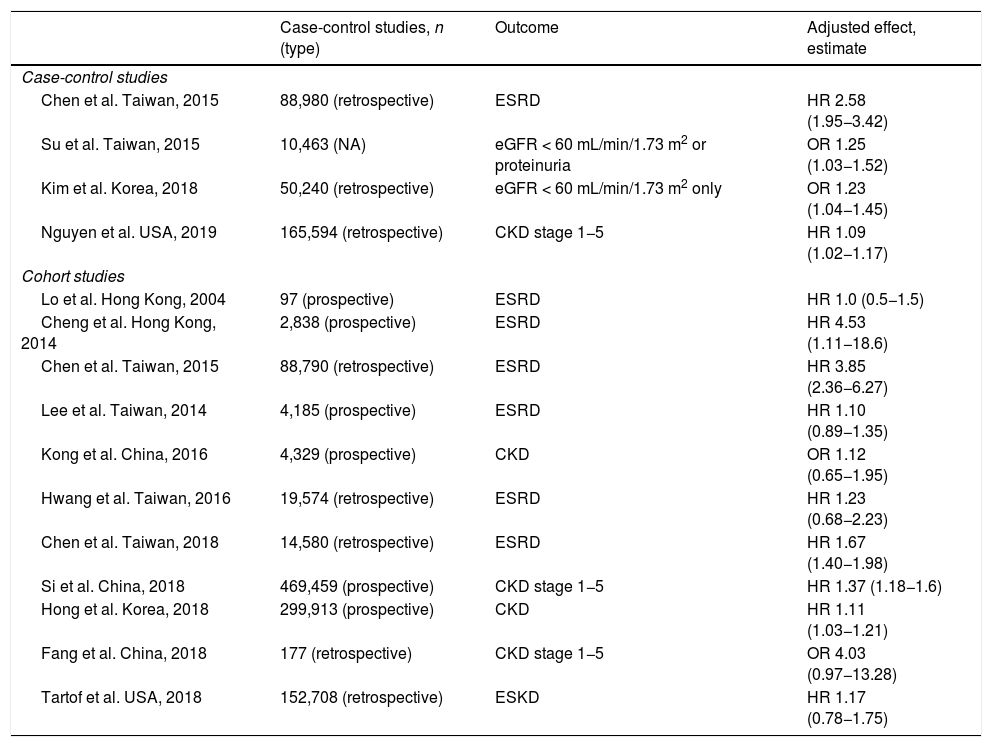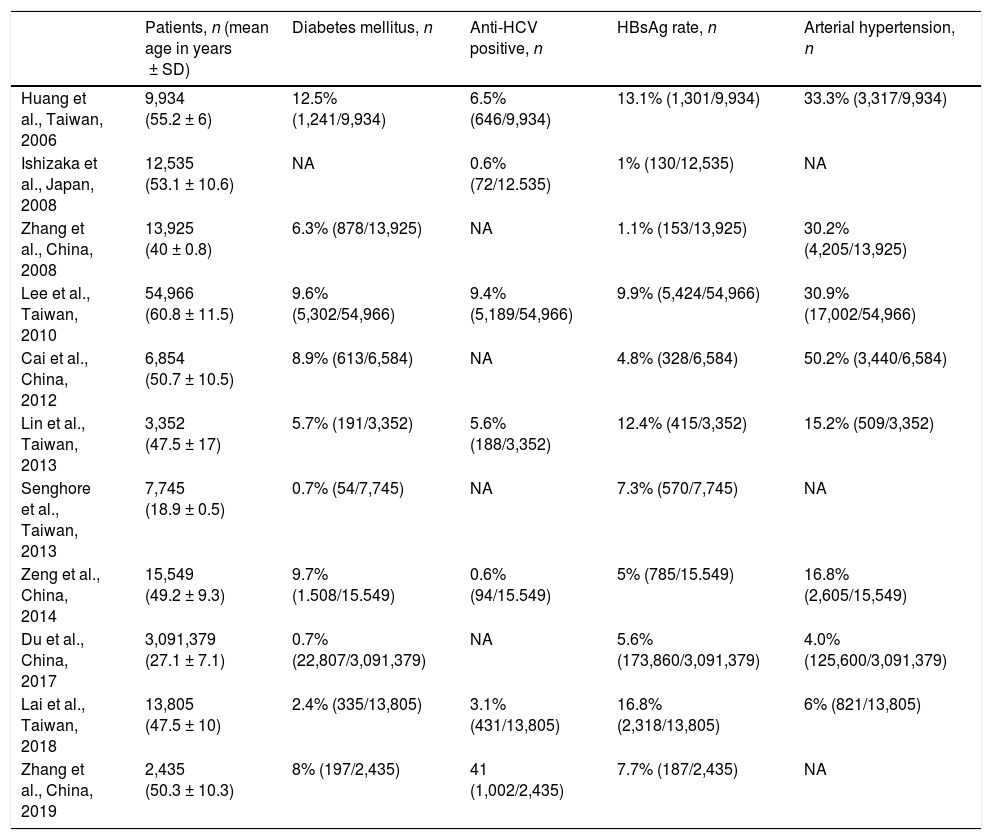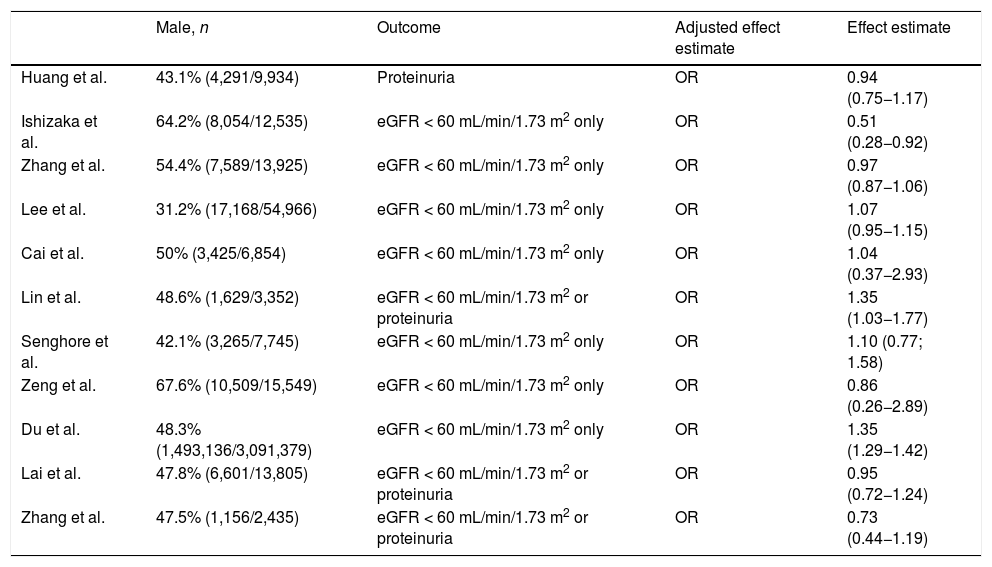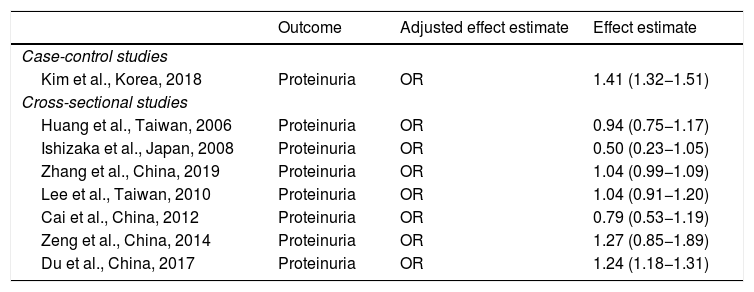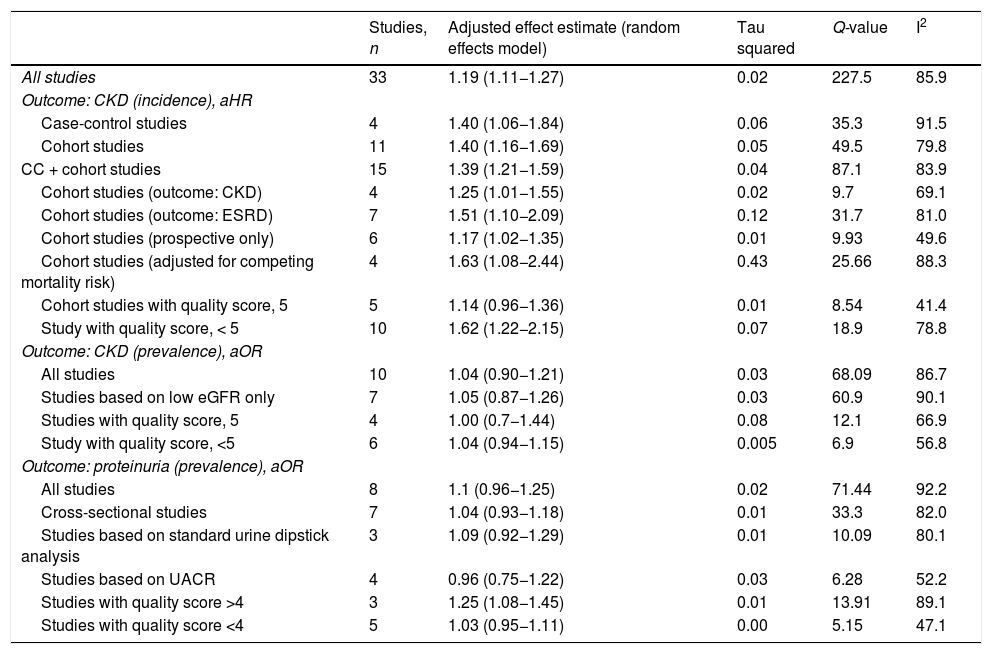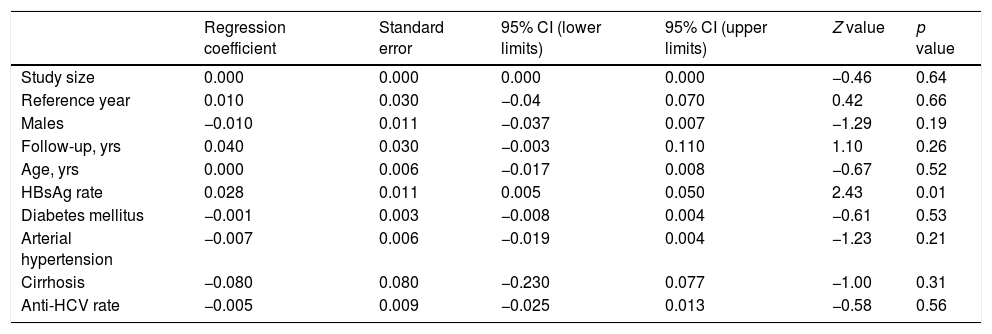The activity of hepatitis B virus (HBV) as a risk factor for the incidence and progression of chronic kidney disease (CKD) has not been clarified.
AimWe evaluated the impact of infection with HBV on the risk of CKD in the general population.
Material and methodsWe carried out a systematic review of the published medical literature to assess whether a relationship between hepatitis B infection and an increased risk of CKD in the adult general population occurs. We adopted the random effects model of DerSimonian and Laird to provide a summary estimate of the risk of chronic kidney disease (defined by lowered glomerular filtration rate and/or detectable proteinuria) with HBV infection across the published studies. Meta-regression and stratified analyses were also performed.
ResultsWe retrieved 33 studies (n = 7,849,849 patients) published in 26 different articles, and separate meta-analyses were performed according to the outcome. Pooling results from cohort studies (11 studies, n = 1,056,645 patients) demonstrated a relationship between positive HBV serologic status and increased incidence of CKD, the summary estimate for adjusted HR with HBV across the surveys, 1.40 (95% CI, 1.16−1.69) (P < .001). Between-study heterogeneity was noted (Q value, 49.5, P < .0001). No relationship between HBV and prevalence of CKD was noted in the subset of cross-sectional studies (10 studies; n = 3,222,545 patients), adjusted OR, 1.04 (95% IC 0.90–1.218; P = .5). Meta-regression analysis reported a relationship between positive HBsAg status and incidence of CKD in the general population (P < .015).
ConclusionsIt appears that exposure to HBV infection seems to be associated with an increased risk of developing CKD in the adult general population. Studies aimed to understand the mechanisms responsible of such association are under way.
El papel del virus de la hepatitis B (VHB) como factor de riesgo en la incidencia y progresión de la enfermedad renal crónica (ERC) no ha sido clarificado.
ObjetivoEvaluamos el impacto producido por la infección con el VHB sobre el riesgo de la ERC en la población general.
Material y métodosLlevamos a cabo una revisión sistemática de la literatura médica publicada a fin de evaluar si existe, en la población adulta general, una relación entre la infección por el VHB y un aumento del riesgo de ERC. Adoptamos el modelo de efectos aleatorios de DerSimonian y Laird para proporcionar una estimación resumida del riesgo de ERC (definida por una tasa de filtración glomerular reducida y/o una proteinuria detectable) por infección con el VHB en los estudios publicados. También se realizaron metarregresiones y análisis estratificados.
ResultadosRecogimos 33 estudios (n = 7.849.849 pacientes) publicados en 26 artículos y se realizó un metaanálisis por separado conforme a los resultados. La agrupación de los resultados de los estudios de cohortes (11 estudios, n = 1.056.645 pacientes) demostró una relación entre un estatus serológico VHB positivo y el aumento de la incidencia de la ERC, con una estimación resumida para la HR ajustada con VHB en todas las encuestas del 1,40 (IC 95% 1,16–1,69; p < 0,001). Se observó heterogeneidad entre estudios (valor Q: 49,5; p < 0,0001). En el subconjunto de estudios transversales no se detectó relación entre el VHB y la prevalencia de la ERC (10 estudios; n = 3.222.545 pacientes; OR ajustada 1,04; IC 95% 0,90−1,218; p = 0,5). Los análisis de metarregresión informaron de una relación entre el estatus HBcAg positivo y la incidencia de ERC en la población general (p < 0,015).
ConclusionesParece que la exposición a la infección por VHB está asociada con un aumento en el riesgo de desarrollar ERC en la población adulta general. Se están realizando estudios destinados a comprender los mecanismos responsables de dicha asociación.
Article
Diríjase desde aquí a la web de la >>>FESEMI<<< e inicie sesión mediante el formulario que se encuentra en la barra superior, pulsando sobre el candado.

Una vez autentificado, en la misma web de FESEMI, en el menú superior, elija la opción deseada.

>>>FESEMI<<<






